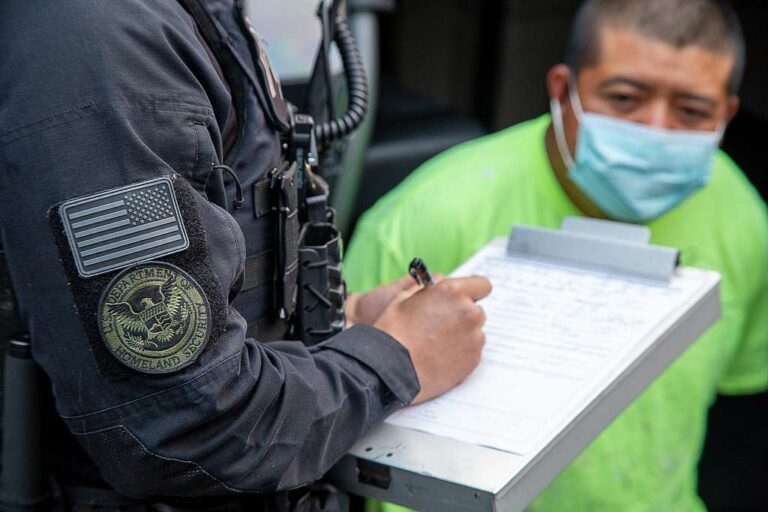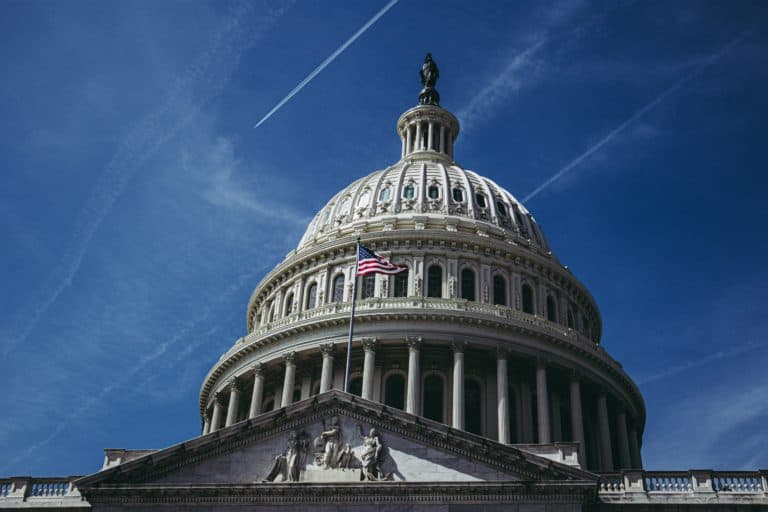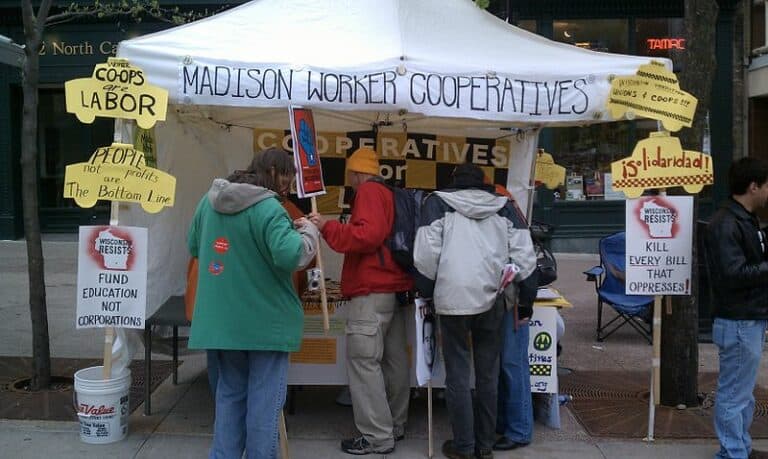
Andrew Strom is a union lawyer based in New York City. He is also an adjunct professor at Brooklyn Law School.
Two recent circuit court decisions highlight how much the composition of the Board and the courts affects rights protected by the National Labor Relations Act. One case, MikLin Enterprises v. NLRB, addressed whether workers at a Jimmy John’s franchise had lost the protection of the Act when they circulated posters with two identical images of sandwiches, one labeled “your sandwich made by a healthy Jimmy John’s worker,” and the other, “your sandwich made by a sick Jimmy John’s worker.” The other case, Arc Bridges Inc. v. NLRB, involved an employer’s refusal to offer the same across-the-board wage increase to workers who had voted to unionize as it gave to all other workers. In each case, the Board, by a 2-1 majority had sided with the workers, and divided courts sided with the employer along straight party lines.
In MikLin, the issue was when workers lose the protection of the Act for “disloyalty” to their employer. In a 1953 case known as Jefferson Standard, the Supreme Court held that workers at a television station engaged in unprotected conduct when they distributed leaflets criticizing the station’s programming where the attacks made no connection to any of the employer’s labor practices. In MikLin, the employer offered no paid sick days, and it required workers to find a replacement if they took a day off. After workers made a demand for paid sick days and were turned down, they circulated posters to call attention to the issue. The poster featured identical photos of sandwiches, with the following text: “Can’t tell the difference? That’s too bad because Jimmy John’s workers don’t get paid sick days. Shoot, we can’t even call in sick. We hope your immune system is ready because you are about to take the sandwich test.” The poster urged readers to “help Jimmy John’s workers win sick days” by calling the owner of the franchise.
The Board had found that the poster was protected by the NLRA because it did not contain inflammatory language, the message was directly related to the ongoing dispute over paid sick leave, and the employees were motivated by a desire to improve their terms and conditions of employment. After an Eighth Circuit panel initially enforced the Board’s order, the en banc Eighth Circuit issued its own 8-2 decision in favor of the employer. The Eighth Circuit majority held that even if a worker’s attack on his employer’s product is accurate and linked to a labor dispute, the employer may fire any worker who makes a “sharp, public, disparaging attack upon the quality of the company’s product and its business policies, in a manner reasonably calculated to harm the company’s reputation and reduce its income.” In other words, workers are only allowed to appeal for support from the public based on principles of altruism, and not based on potential common interest. The two dissenting judges described this as “depriv[ing] employees of what may be their most cogent argument for obtaining the third party’s aid.” The majority defended its holding by arguing that an attack on the employer’s product causes harm that outlasts the labor dispute. These judges insisted that “[e]ven if MikLin granted paid sick leave, the image of contaminated sandwiches made by employees who chose to work while sick was not one that would easily dissipate.” Of course, it’s not at all clear that this is true. MikLin could have granted paid sick leave and then advertised that its workers could afford to take off while they were sick, while its competitors could not provide the same assurance.
In Arc Bridges, the issue was whether the employer’s decision to deny raises to workers who had recently voted to unionize, while granting raises to all other employees was motivated by hostility toward their decision to organize. For eight years in a row, if Arc Bridges had sufficient funds, it gave an across-the-board wage increase to all employees in July. In November 2006, and February 2007, the NLRB certified a union to represent two different groups of workers. In June 2007, the employer’s board of directors authorized a three percent wage increase for all staff in July. The employer delayed giving any raises; then, in October, it gave the increase only to unrepresented workers, retroactive to July.
The NLRB found that the decision to deny the raise to the unionized workers was unlawfully motivated. First, the employer’s area manager essentially admitted as much. She told a worker that the employer was going to give them a raise “until [they] voted the Union in.” A supervisor also told a worker that the money that would have gone for their raises was now going to pay for lawyers. The Board also relied upon the employer’s suspicious timing. Workers cannot decertify a union for a year following certification. Here, the increases for the non-union workers, including a large retroactive lump-sum, came just before the first group to unionize would be able to decertify. Notably, in May a supervisor had told a worker that the union would be gone by November.
The Board also found that the evidence did not support the explanations the employer offered for its decision. The employer’s Executive Director testified that she believed that granting a 3-percent raise to the represented employees might provoke a strike because the union was seeking much larger raises. Yet, months later, after the workers authorized a strike, the employer offered the unionized workers a 1.5% raise. The Executive Director also claimed that she gave the wage increase to unrepresented workers because she was worried about the high turnover rate among managers and supervisors. The Board found this unconvincing because a majority of the unrepresented workers were neither managers nor supervisors.
A divided D.C. Circuit panel refused to enforce the Board’s order. The panel majority found that the statements blaming the union for workers not getting their raises were merely accurate statements of bargaining strategy and financial constraints. The majority also second-guessed the Board’s reasoning, finding insufficient evidence that to support the conclusion that the offer of the 1.5% raise several months later undermined the assertion that the raise was initially withheld out of fear of provoking a strike. The majority further described giving raises to non-union rank-and-file workers in order to ward off turnover among managers and supervisors as an “innocuous fact,” consistent with the employer’s history of raising wages for all employee whenever it raised wages of managers and supervisors. Of course, that prior history also included raises for the group of workers who were denied raises this time. In dissent, Judge Tatel found that “two antiunion statements by supervisors, two pretextual justifications by the Executive Director, and a suspiciously timed raise to unrepresented employees amount to more than enough evidence” to support the Board’s finding of unlawful motivation.
Between the Board Members that President Trump has nominated, and the judges he will appoint, in the years ahead we will likely see many more instances where the protections the NLRA affords workers continue to shrink.










Daily News & Commentary
Start your day with our roundup of the latest labor developments. See all
July 9
In Today’s News and Commentary, the Supreme Court green-lights mass firings of federal workers, the Agricultural Secretary suggests Medicaid recipients can replace deported farm workers, and DHS ends Temporary Protected Status for Hondurans and Nicaraguans. In an 8-1 emergency docket decision released yesterday afternoon, the Supreme Court lifted an injunction by U.S. District Judge Susan […]
July 8
In today’s news and commentary, Apple wins at the Fifth Circuit against the NLRB, Florida enacts a noncompete-friendly law, and complications with the No Tax on Tips in the Big Beautiful Bill. Apple won an appeal overturning a National Labor Relations Board (NLRB) decision that the company violated labor law by coercively questioning an employee […]
July 7
LA economy deals with fallout from ICE raids; a new appeal challenges the NCAA antitrust settlement; and the EPA places dissenting employees on leave.
July 6
Municipal workers in Philadelphia continue to strike; Zohran Mamdani collects union endorsements; UFCW grocery workers in California and Colorado reach tentative agreements.
July 4
The DOL scraps a Biden-era proposed rule to end subminimum wages for disabled workers; millions will lose access to Medicaid and SNAP due to new proof of work requirements; and states step up in the noncompete policy space.
July 3
California compromises with unions on housing; 11th Circuit rules against transgender teacher; Harvard removes hundreds from grad student union.